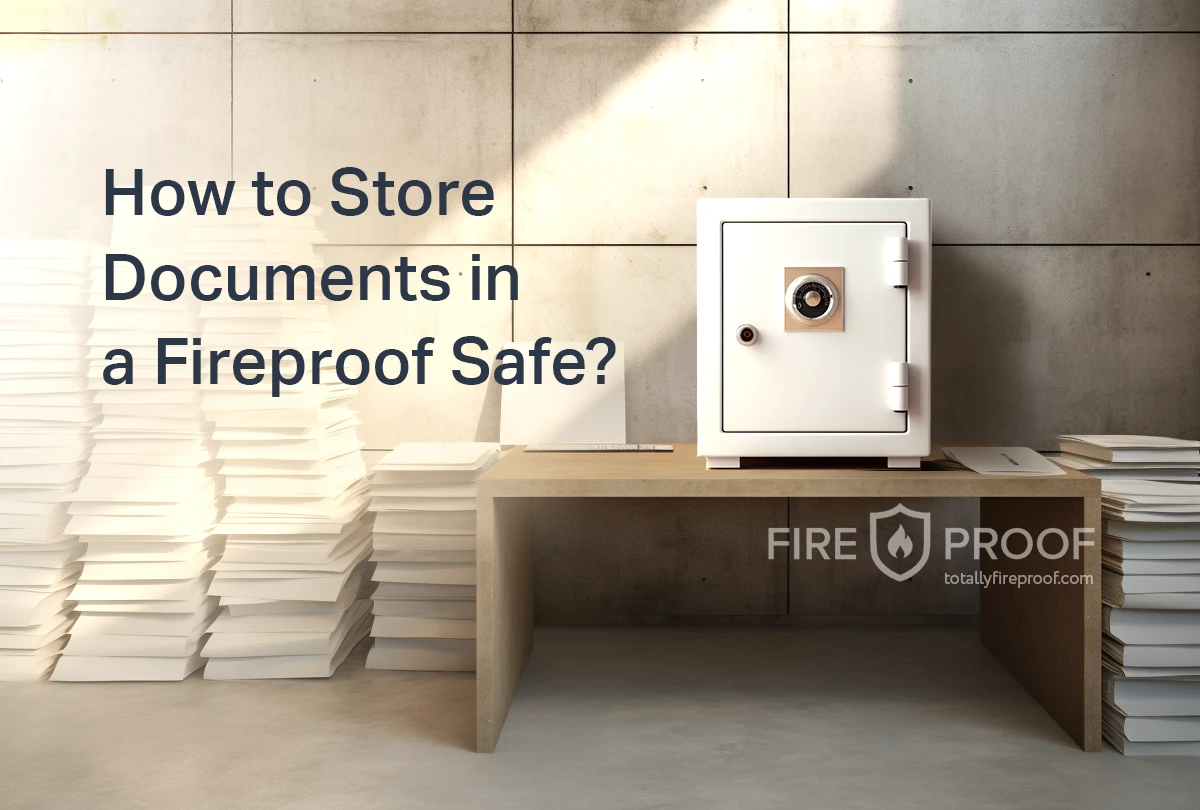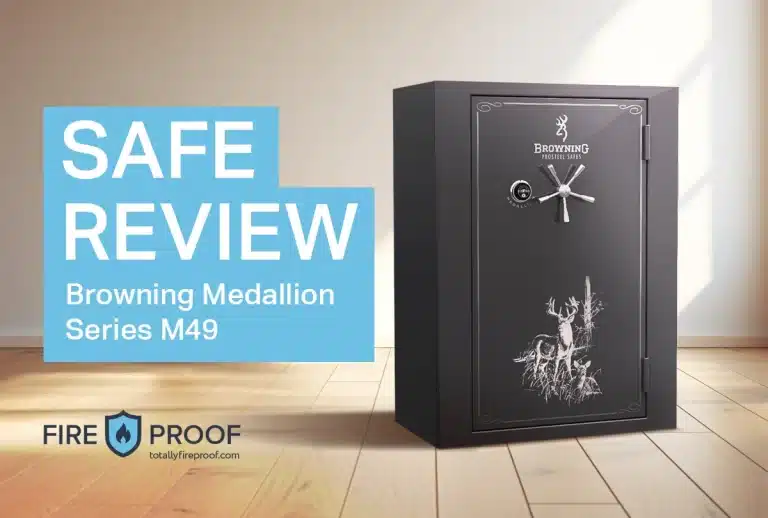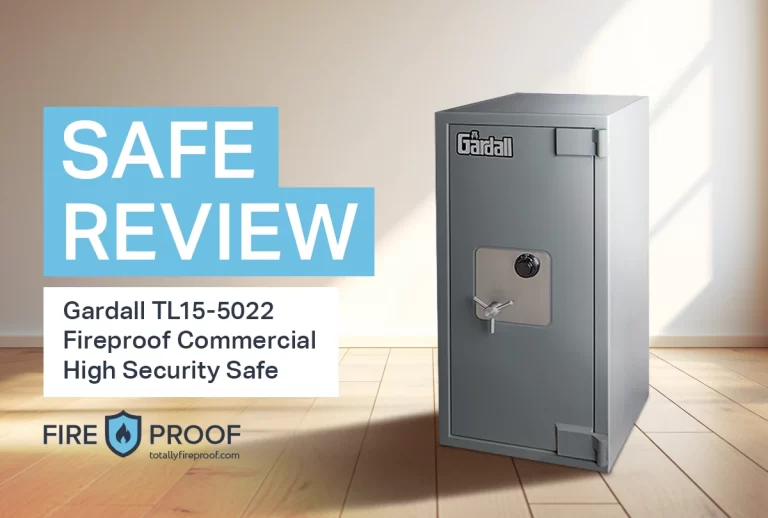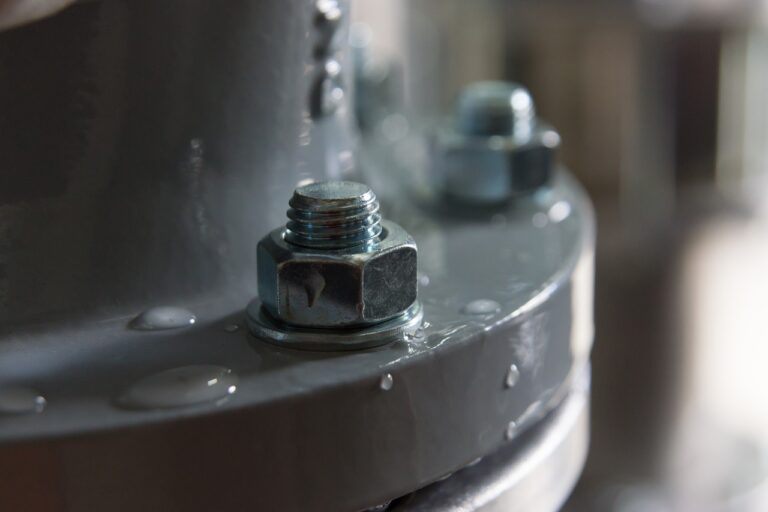How to Store Documents in a Fireproof Safe?
In today’s digital age, we often forget the importance of physical documents. Birth certificates, passports, marriage certificates, financial records, and legal documents are not just pieces of paper; they represent our identity, history, and security. Protecting them from threats like theft, fire, and water damage is crucial.
This article explains how you can store, organize and safeguard your vital documents in a fireproof safe.
What Documents Should be Stored in a Fireproof Safe
It’s essential to identify the documents that need and are always worth additional protection. Here’s a comprehensive list of crucial documents that should be securely kept within a fire-resistant safe:
- Birth Certificates: The fundamental proof of identity.
- Social Security Cards: Essential for employment and benefits.
- Passports: Your gateway to international travel.
- Marriage or Divorce Certificates: Vital for legal matters.
- Driver’s License and State-Issued IDs: Proving your right to drive and reside.
- Custody or Guardianship Documents: Ensuring the welfare of dependents.
- Financial Documents: Bank statements, tax returns, and investment records.
- Medical Records: Critical for healthcare continuity.
- Legal Documents: Wills, deeds, and power of attorney.
- Pet Records: Ensuring the well-being of your furry companions.
- Titles to Property: Proof of ownership for real estate and vehicles.
Here’s an image you can use as a quick useful reference:
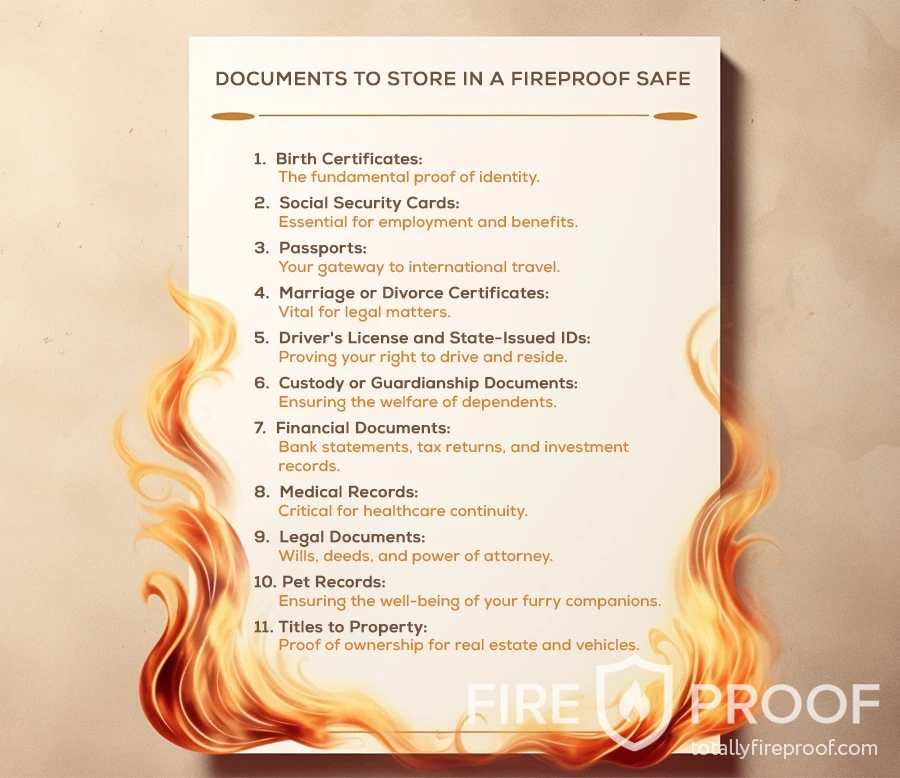
The accessibility of these documents during emergencies is paramount. Safes provide not only security but also quick access to these crucial papers when you need them the most.
How to Choose the Right Fireproof Safe for Documents
Now that you know what documents to protect, let’s explore the world of fireproof safes and how to select the right one for your needs. Here are some key considerations:
- Types of Fireproof Safes: Fireproof safes come in various types, including portable and wall-mounted options.
- Construction and Fire-Resistant Insulation: Look for safes with robust construction and fire-resistant insulation materials.
- UL Testing and Fire Ratings: Ensure that the safe has been tested and certified by Underwriters Laboratories (UL) and has an appropriate fire rating.
- Duration of Fire Resistance: Different safes offer varying degrees of fire resistance, so choose one that matches your needs.
- Portable Safes: Portable fireproof safes are ideal for homes and apartments, offering both security and mobility.
Selecting the right safe ensures that your documents remain safe even in the face of a fire.
How to Keep Documents Dry in a Safe
Water damage is a real threat that often accompanies fires or other disasters. While fireproof safes are designed to withstand high temperatures, they can also incorporate water-resistant features to protect your documents from moisture.
Addressing Water and Moisture Damage.
You might wonder how water gets inside a fireproof safe. It often occurs when firefighting efforts involve water, such as sprinkler systems or hoses. Additionally, the heat from a fire can create steam within the safe, causing water vapor to condense on your documents. To mitigate this risk, consider a fireproof safe with a water-resistant seal or gasket that forms an airtight barrier, preventing moisture from seeping in.
The Release of Water Vapor.
Another factor to consider is the release of water vapor during a fire. While the interior of the safe remains below its critical temperature, the outside environment might not. When the safe is opened after the fire is extinguished, the temperature disparity can lead to the formation of condensation inside the safe. This is why it’s crucial to properly ventilate the safe and allow it to cool gradually before retrieving your documents.
Tips for Keeping Documents Dry
To enhance the moisture protection of your fireproof safe, consider these practical tips:
- Dehumidifiers: Utilize desiccant dehumidifiers designed for safes to absorb excess moisture and maintain a dry environment.
- Plastic Page Slips: Place important documents within plastic page slips or resealable bags to create a barrier against moisture, adding an extra layer of protection.
- Ventilation: Periodically open the safe to allow fresh air circulation, reducing the potential for condensation.
- Regular Inspection: Conduct routine checks to ensure your documents remain dry and undamaged. Replace any damaged page slips or bags promptly.
By following these simple steps, you can enhance your fireproof safe’s ability to keep your documents both fireproof and moisture-resistant, ensuring their safety and integrity even in the face of unexpected challenges.
How to Store and Organize Documents in the Fireproof Safe
Organizing your documents within a fireproof safe is not just about stashing them away; it’s about creating a systematic and accessible storage system. By strategically dividing your safe into color-coded sections and understanding the purpose of each, you can significantly enhance the effectiveness of your document protection strategy.
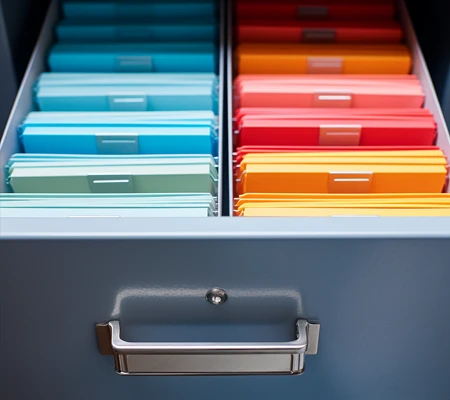
Color-Coded Sections for Easy Retrieval One of the most practical approaches to organizing your documents is to divide your fireproof safe into color-coded sections. Assign a specific color to different types of documents to simplify the retrieval process. For instance:
- Green Section: Designate this area for cards such as identification cards, driver’s licenses, and membership cards.
- Blue Section: Allocate the blue section for important documents like birth certificates, passports, and marriage certificates.
- Red Section: Reserve this space for health insurance documents, making them readily accessible in case of medical emergencies.
- Yellow Section: Use the yellow section for other insurance policies, ensuring you can quickly access vital information during unforeseen events.
- Purple Section: Dedicate the purple section to wills and life insurance documents, as these are crucial for estate planning and family security.
Understanding the purpose of each section makes it 100 times easier to use your documents when in need. For example, the green section allows you to grab your identification cards swiftly in everyday situations, while the red section ensures immediate access to health insurance details during medical emergencies. When you give each section a specific job, it makes it easier to find your documents quickly, which saves time and reduces stress in crucial moments.
Imagine needing a specific document urgently; a well-structured safe can make all the difference. By embracing a color-coded system and understanding the function of each section, you ensure that your important papers remain secure and easily accessible, providing you with peace of mind in times of need.
Best Place to Store a Fireproof Document Safe
Selecting the right location for your fireproof document safe is a critical decision that can significantly impact its effectiveness. The placement of your safe plays a vital role in ensuring the security and accessibility of your important documents. Take these factors into account to choose the best spot for your fireproof safe.
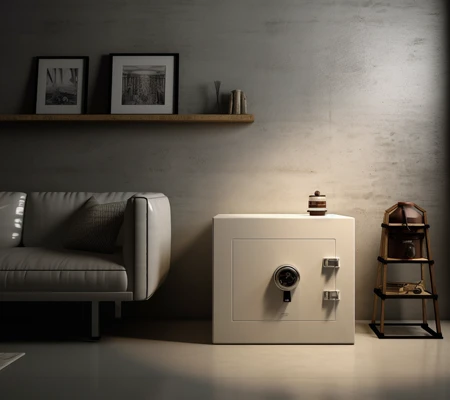
The Significance of Location. The placement of your safe should take into account factors like environmental hazards, ease of access, and security.
Avoiding Wet Areas and Fire-Prone Places When deciding on a location, steer clear of wet areas in your home, such as basements or areas susceptible to water leaks. Fireproof safes are designed to protect against fire and heat, but they may not provide the same level of protection against water damage. Additionally, avoid placing the safe in areas prone to fires, such as kitchens, garages, or near heating equipment.
Choosing a Suitable Surface Ensure that the surface on which you place your fireproof safe is stable and level. This prevents the safe from tipping over or sustaining damage. You can use a sturdy shelf or a dedicated safe stand to elevate it to a comfortable height for easy access.
Balancing Accessibility and Security Accessibility is crucial, especially in emergencies. You want to be able to retrieve your important documents quickly when needed. However, it’s equally important to strike a balance between accessibility and security. Avoid placing the safe in overly exposed locations where it may be easily noticed by potential intruders. Concealment can enhance security without sacrificing accessibility.
Ideal Locations Considering these factors, some ideal locations for your fireproof document safe include:
- Study Room: If you have a home office or study, it’s an excellent place for your safe. It offers a balance of accessibility and security.
- Closet: A closet, especially in the bedroom, provides an inconspicuous yet accessible location.
- Bedroom: The bedroom is often considered one of the safest areas of a home, making it a suitable choice.
Ultimately, the best location for your fireproof safe will depend on your specific home layout and personal preferences.
Conclusion
In summary, the protection and organization of your vital documents is important in safeguarding your identity and ensuring the smooth flow of various life events. Fireproof safes offer a robust solution to shield your documents from threats such as fire, theft, and water damage.
By understanding the types of documents that should be stored, choosing the right safe, keeping documents dry, and implementing an organized storage system, you bolster your document protection strategy.
Take proactive steps to secure your valuable papers today. Organize your documents, invest in a quality fireproof safe, and make use of the tips provided in this article to ensure that your important papers remain intact and accessible when you need them most. We also have compared the Best fireproof safes for documents on the market, feel free to check these top safes.
Of course you can also store cash in such safes. Cash will not burn in a fireproof safe, so why not keeping it secure?
FAQs
- Q: Are documents safe in a fireproof safe? Yes, documents are secure in a fireproof safe. Fireproof safes, designed to withstand high temperatures and protect your important papers, create a safe environment for your documents.
- Q: How can you keep documents safe in a fire? To keep documents safe in a fire, store them in a fireproof safe. Fireproof safes are constructed with fire-resistant materials that can endure extreme heat, guaranteeing the preservation of your documents.
- Q: What documents should go in a fireproof box? Essential documents, such as birth certificates, passports, financial records, legal documents, and insurance policies, should be placed in a fireproof box. These critical papers are both valuable and challenging to replace, making them prime candidates for protection within a fireproof box.
- Q: Do fireproof document boxes work? Yes, fireproof document boxes are exceptionally effective at safeguarding your important papers. Engineered to endure intense heat, these boxes serve as a reliable barrier against fire damage. When utilized correctly, they provide a secure and dependable solution for protecting your documents.
- Q: Is it worth having a safe at home? Yes, it is highly worthwhile to have a safe at home, especially if you want to ensure the safety of your important documents and valuable possessions from theft, fire, or other unforeseen disasters.

